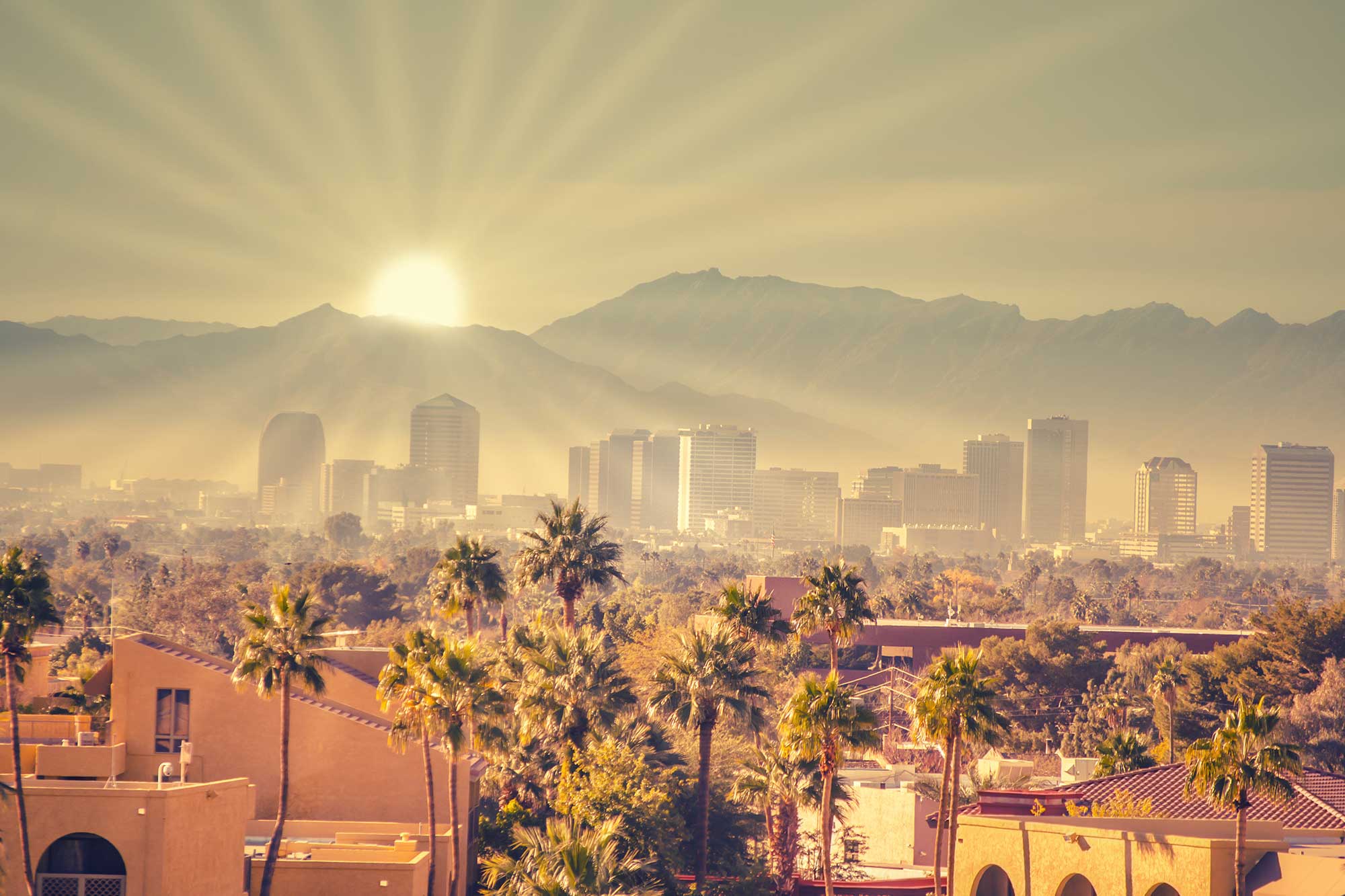Hey team, and welcome back to one5c. Should we do that thing where we go around the room and say what we’re grateful for? Despite the ongoing bummer buffer of pre-COP28 report cards, some good stuff did genuinely happen last week, so I’ll go first. I’m grateful that we have the technologies we need to pull ourselves back from the climate brink—if we can get out of our own way enough to use them. I’m grateful that the urban neighborhood I live has an abundance of trees, when so many city-dwelling Americans aren’t nearly as lucky. I’m grateful to have a cadre of food-loving friends dedicated enough to saving the world to come together and create a delicious and sustainable Thanksgiving menu.
In fact, I’m most grateful that none of us is alone in this fight. So please keep inviting your friends to join in. I’d be ever so grateful. —Corinne
WHAT WE’RE INTO THIS WEEK
By Corinne Iozzio

Oh, oh, I want to know: Where do the Crocs go? ZikG/Shutterstock
Greenwatch
Crocs admits their plan is that they have no plan
There’s something refreshing about a company freely admitting that its shit does, in fact, stink. Crocs has announced a pilot takeback program for its popularly hideous plastic clogs in 10 states. Gently used ones will go into a secondhand market, while the company will use positively destroyed ones to try to figure out how to keep its proprietary Croslite resin, which is largely derived from fossil fuels, in circulation. How? Dunno. To make what? Also 🤷. But, hey, at least they’re honest? The footwear industry, GreenBiz reports, needs an overall reality check: We toss 22 billion pairs a year, and shoemakers are way behind their textile brethren in addressing their issues.
Earth-friendly eats
A delectable (and sustainable) Friendsgiving feast
There are three reasons we decided to turn Thanksgiving into a BYO affair over at Cool Beans (one5c’s newsletter focused on planet-friendly eating). First, saving the planet is an all-hands-on-deck situation. Second, the intent of the OG meal was about coming together to celebrate the harvest with reverence for said planet. And third, who in the actual heck wants to cook the whole meal anymore anyway? So we invited five of our favorite food writers to collaborate on a six-dish sustainable menu so hearty and delicious we promise you won’t even miss the turkey.
Good read
How to get America building again
We used to build big in the U.S.: skyscrapers, assembly lines, the Hoover freakin’ Dam. But in a moment when we need to drop massive bucks on massive initiatives to address the massive emergency that is the climate crisis, we get…kinda stuck. It’s not that things like high-speed rail and large-scale offshore wind are stymied everywhere, they just seem to be stymied here. What gives? “It’s pissed-off locals, who don’t want stuff—any stuff—built in their backyards,” writes Adam Rogers for Business Insider. More specifically: It’s locals who are emboldened and empowered by a regulatory framework that’s stuck deep in the last century. Therein, he posits in this bitingly honest and funny and hopeful essay, lies both the problem and a road map for the solution.
Cause for optimism
A milestone in cheap carbon removal
Every scenario for pulling the world back from climate catastrophe involves technologies that pull carbon from the atmosphere and sock it away somewhere safe. For that to happen, though, removal methods need to get incredibly cheap: $100 per ton of carbon snatched up. Direct-air capture, a headline-grabbing tech that uses massive fans to suck in CO2, costs at least six times that. Last week, Tennessee company Graphyte launched a tech that hits the one-Benjamin benchmark. Its system shunts captured carbon into dehydrated blocks of discarded plant matter, which can then be stored underground. It’s an approach so simple it just might work.
Mic-drop climate stat

The equivalent of U.S. emissions that could be sequestered by conserving existing old-growth forests and restoring degraded ones, according to new analysis in the journal Nature: 61% of that total relies on protecting existing old-growth forests.
Who’s going to save the world
A simple fix in the country’s hottest city
By Glorie Martinez

A scorching sunrise over Phoenix, Arizona. BCFC/Shutterstock
The Candidate
In her efforts to make her hometown “the most sustainable desert city,” Kate Gallego, the incumbent mayor of Phoenix, created the Office of Heat Response and Mitigation. The office—the world’s first publicly funded division focused on combating extreme heat—is pursuing several ambitious projects, but its biggest long-term success could be creating an urban forest to help keep things cool.
The Local Story
Phoenix is one of the biggest and fastest-growing cities in the country. It’s also the hottest, a distinction it had earned even before its record streak of 31 days with temperatures above 110 degrees this past summer. Almost half of its residents live in neighborhoods that are 8 degrees hotter than outlying areas, and heat-related deaths in the county are on the rise. So far in 2023, there have been almost 600 confirmed fatalities, and African Americans and Indigenous Americans are overrepresented among those numbers.
The EPA ties health risks to the urban heat island effect, which occurs when a lack of trees, vegetation, and bodies of water allow temperatures to build. Heightened city temps also lead to increased energy use and diminished air quality.
While Gallego’s office has placed bets on short-term fixes like heat-reducing pavement and housing for people experiencing homelessness, the city aims to address urban heat for good by covering 25% of its land area with trees by 2030. Trees provide shade, block solar rays, and add moisture to the air, all of which reduces the risk of heat islands. The Office of Heat Response and Mitigation started a cool corridors program in Phoenix last year, and the initiative aims to plant 200 trees per mile—for a total of roughly 2,000 new trees. The plan focuses on neighborhoods with little shade and high pedestrian traffic.
According to estimates from The Nature Conservancy, achieving that level of tree coverage in the Phoenix metro area would cost about $4 billion, but it would save more than $15 billion in costs related to heat-related deaths and injuries, infrastructure repairs, and lost productivity. A bigger canopy would also lower energy demand and capture more than 35,000 tons of carbon a year—which is like taking more than 28,000 cars off the road.
The National Picture
Heat islands are expected to get worse across the U.S. as cities continue to sprawl and increase in population. Over the past decade, 57 out of 60 big American cities experienced dangerous temperature spikes during the summer, and metros could become up to 10 degrees warmer during the day and 14 degrees warmer at night by the end of the century. Low-income and minority communities bear the brunt of the impacts, due to the disproportionate lack of canopy in their neighborhoods.
The benefits of planting more trees could be huge. A Lancet study found that doubling tree cover in European cities to 30% would reduce deaths from urban heat islands by 40%. In Shanghai, efforts to increase vegetation would save 579 million kilowatt-hours of electricity per year by reducing demand to cool buildings, which corresponds to 515,000 fewer tons of carbon emissions, or more than 381,000 cars.
